![]()
Mon, June 17, 2013
This study was first published in Hebrew by The Meir Amit Intelligence and Terrorism Information Center. This is the updated English version and will be published in three parts. You can read part 2 here and part three here.
Overview[1]
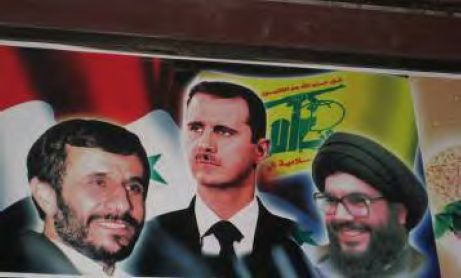
The heads of the “resistance camp:” Ahmadinejad, Bashar Assad and Hassan Nasrallah on the backdrop of Syrian and Hezbollah flags (Sablat Oman forum, March 8, 2012)
For Iran and Hezbollah, the preservation of Bashar Assad’s regime is of supreme strategic importance. Syria is Iran’s greatest “resistance camp” ally, providing it with a firm foothold in the heart of the Middle East as well as political and military influence. Syria also plays a vital role in Hezbollah’s military buildup, helping it to construct offensive and deterrent capabilities against Israel. For Iran and Hezbollah, the fall of the Syrian regime would be a disaster, it would weaken Iran’s regional position against the United States and Israel and damage Hezbollah’s military capabilities and political influence in Lebanon.
Iran and Hezbollah have not only strategic interests, but also feel religious-sectarian solidarity for Syria’s Shi’ite population (an estimated 400,000-450,000 strong) and with the Alawite sect that rules Syria. That solidarity, noticeable in Nasrallah’s recent speeches, has became stronger since the Syrian Shi’ites and their holy sites in Syria became targets for harassment by the rebels (particularly organizations affiliated with Al-Qaeda, such as the Al-Nusra Front, which considers Shi’ites as infidels).
With those dangers in mind, Iran and Hezbollah employ two parallel strategic courses: the first, immediate course is intended to prop up the Syrian regime’s ability to survive and continue governing, and entails military, economic, political and propaganda support. The second, planned as both an intermediate- and longterm strategy, is intended to make it possible for the Shi’ites and Alawites to defend themselves by founding a “popular army.” In our assessment such a popular army is planned for an estimated 100,000-150,000 militiamen, and will give Iran and Hezbollah a foothold in the areas populated by Shi’ites and Alawites, making them important factors in the internal Syrian arena in the post-Assad era.
In addition to providing a response to potential dangers, Hezbollah seeks to acquire advanced military capabilities from the Syrian regime, the possession of which could deter Israel and challenge its technological superiority. Such advanced capabilities include advanced surface-to-surface missiles (such as the Iranian Fateh-110s), anti-ship cruise missiles (Russian Yakhonts) and anti-aircraft missiles (Russian SA-17s and other systems). In our assessment also Hezbollah wants to exploit the weakness and strategic distress of the Assad regime to gain a foothold in the Golan Heights from which to carry out terrorist attacks against Israeli. Hezbollah’s desire for “game-changing” weapons and its willingness to “help” the so-called “Syrian popular resistance” in the Golan Heights were openly mentioned in a speech given by Hassan Nasrallah on May 9, 2013. Israeli policy, as stated by Israeli Prime Minister Benyamin Netanyahu, was “to prevent, the transfer of advanced weapons to Hezbollah and to [other] terrorist elements.”[2]
Iranian policy regarding the civil war in Syria is handled by the Qods Force (commanded by Qassem Suleimani), with Hezbollah as Iran’s main subcontractor. Hezbollah’s involvement in the Syrian civil war is manifested by its sending several thousand operatives to participate in the fighting in Shi’ite regions. Hezbollah also supports the Syrian regime by training (its forces in guerilla warfare), providing it with intelligence, securing the Syrian-Lebanese border, taking preventive measures inside Lebanon and waging propaganda campaigns.
The operatives sent to Syria play an important role in the fighting, especially in locations where Hezbollah (and Iran) have sectarian-religious interests. They include the Al-Qusayr region, south of Homs, near the northern border with Lebanon where there is a Shi’ite population living within a Sunni area (on June 5, 2013, the Syrian army announced its takeover of Al-Qusayr) and the grave of Al-Set Zaynab, located south of Damascus, an important holy Shi’ite pilgrimage site. Hezbollah continues to be sucked further into the civil war in Syria despite its losses and the political price it is forced to pay: so far more than one hundred of its operatives have been killed (most of them in the campaign for Al-Qusayr) and criticism of Hezbollah has increased among its opponents in Lebanon and throughout the Arab world.
Hezbollah was involved in the first year of the civil war in Syria but was careful to keep a low profile. In 2012 it sent a limited number of its military operatives to Syria, mainly as advisors and for security missions. Hezbollah was actively drawn into the war (as opposed to Iran’s caution) during the first half of 2013. That was because in both Iranian and Hezbollah assessment the survival of the Syrian regime was in jeopardy and that Shi’ite religious-sectarian interests were being threatened. However, despite its having been sucked into the Syrian morass, Hezbollah’s direct involvement in the war is still relatively limited and its overall influence on events in Syria is secondary. However, its involvement may grow as the Syrian regime weakens and the dangers to Iran and Hezbollah’s strategic interests increase.
Contents of This Study
- Iran and Hezbollah interests in Syria
- The dangers and potential opportunities of the Syrian civil war
- Iranian support for the Syrian regime
- Iran, Hezbollah and Syria coordinate positions
- Hezbollah support for the Syrian regime
- Overview
- Direct Hezbollah participation in the fighting
- Other areas of Hezbollah support
- Preparations for the morning after the collapse of the Syrian regime: Establishing Shi’ite and Alawite militias
- The main campaign: Al-Qusayr (south of Homs)
- An explosive friction zone: The grave of Zaynab, sacred to Shi’ites (south of Damascus)
- The price Hezbollah pays for supporting the Syrian regime
- Analysis of Hezbollah operatives killed in the fighting in Syria
- Appendix: List and pictures of Hezbollah operatives killed in Syria
Iran and Hezbollah Interests in Syria
For Iran, preserving the regime of Bashar Assad is of supreme strategic importance: Syria is Iran’s most important ally in the so-called “resistance camp” and provides Iran with a firm foothold in the heart of the Middle East. The Iranians are concerned that the collapse of the Assad regime and its replacement by a pro-Western regime are liable not only to damage Iranian influence in Syria and Lebanon, but to weaken its political influence in the Middle East against the United States, Israel and pro-Western Arab countries, and strike a blow to its desire for regional hegemony.
Hezbollah, Iran’s proxy, has its own reasons to support the Syrian regime and keep it from collapsing: Syria (with Iran) plays a vital role in Hezbollah’s military buildup, and in maintaining its offensive and deterrent capabilities against Israel. For Hezbollah, Syria is an important source of advanced weaponry (including longrange rockets and missiles) and the main transit station for the weapons sent from Iran to Hezbollah in Lebanon. In addition, Hezbollah feels religious-sectarian solidarity with the Shi’ites and Alawites in Syria. For years Syria has supported Hezbollah in the internal Lebanese arena and given it backup in its fight against its political opponents (the March 14 Camp). All of the above made Syria, under President Hafez al-Assad and more so under his son Bashar, a strategic ally, giving Hezbollah logistic depth and important political support.
Hezbollah’s interests and Syria’s importance were expressed by Hassan Nasrallah in a speech on May 25, 2013, marking the 13th anniversary of the IDF’s withdrawal from the security zone in south Lebanon. He publicly admitted Hezbollah’s participation in the Syrian civil war and elaborated on the claim that by participating Hezbollah was protecting Lebanon, Palestine and Syria (Radio Nur, May 25, 2013):
- The threat to Lebanon and the Lebanese: Nasrallah claimed that the civil war was not an uprising of the Syrian people against the regime or a demand for reforms, but rather a war led by global jihad-affiliated networks from all over the world (the takfirs, to quote Nasrallah).[3] Their conquest of regions near the Lebanese border (a hint at the Al-Qusayr region which Hezbollah later took control of) was, he said, “a danger to all Lebanon and Lebanese,” not only to Hezbollah or the Shi’ites. He appealed to the Lebanese to consider the thousands of religious-sectarian suicide bombing attacks carried out by global jihad groups in Iraq and to learn from the lesson of their crimes in Pakistan, Afghanistan and Somalia. He also referred to the atrocities carried out by global jihad groups that “rend bodies, shatter heads, burrow into graves and destroy the past…the present and the future, reject every political solution and insist on fighting.”
- The danger of the West’s taking control of Syria: What is happening in Syria, according to Nasrallah, is not a “popular revolution” against the regime. Rather, it is an attempt to enforce an American-Western political agenda, compatible with Israel’s agenda, on the region, using “regional states” (a hint at rebel-supporting Saudi Arabia, Qatar, Jordan and Turkey).
- The danger to the “Palestinian resistance” [i.e., the Palestinian terrorist organizations]: Nasrallah repeatedly stated that Syria was the “backbone of the resistance” and “its support.” Therefore, if Syria fell into the hands of the Americans, Israeli, global jihad organizations (the takfirs) and the Arab-Muslim countries supporting the rebels (“the regional cats paws”), the “resistance would be besieged” and Israel would enter Lebanon to enforce its conditions on the Lebanese people.
According to Nasrallah, “if Syria falls, Palestine will be lost, the resistance will be lost, and Gaza, the West Bank and holy Jerusalem will be lost. If Syria falls into American, Israeli and fundamentalist hands, then the people of the region and the countries of the regions will be force-marched to hard times, terrible, dark times…” Therefore, “the resistance remain idle and allow its back to be broken and its support to be broken.” He stressed that in recent weeks Hezbollah had entered a new phase, “fortifying the resistance and defending its back [i.e., Syria], fortifying Lebanon and defending its back [i.e., Hezbollah].” Hezbollah, he said, would win the campaign and be victorious, as it had been victorious in other campaigns.
A current example of the importance of Syria as a transit station for advanced weapons from Iran was the two aerial attacks attributed by the foreign media to Israel, carried out in the Damascus region at the beginning of May 2013. According to a report in The New York Times, American officials said the attacks had targeted a shipment of Fateh-110 surface to surface missiles sent from Iran to Hezbollah. The missiles, according to the article, had been stored in a warehouse in the Damascus international airport and secured by operatives belonging to Hezbollah and the Iranian Qods Force. The missiles were mobile, accurate and solid fueled, and their range covered most of Israeli territory, including the Tel Aviv area. (The New York Times, May 4, 2013).
The Dangers and Potential Opportunities of the Syrian Civil War
In addition to protecting vital interests, a military presence on Syrian soil and the construction of armed Shi’ite and Alawite militias in Syria might preserve the Iranian-Hezbollah foothold in Syrian politics and society for the morning after the collapse of the regime. As far as Iran and Hezbollah are concerned, their presence not only props up the Syrian regime but also provides a response to the dangers which may develop in Syria and Lebanon if it collapses or is significantly weakened. There are three possible dangers:
- The civil war will seep into Lebanon. The collapse of the Syrian regime may lead to political and physical harm to the Alawites and Shi’ites in Syria. The situation is liable to seep into Lebanon and damage its delicate sectarian fabric, encouraging the Sunnis (and members of other sects) to try to harm Hezbollah’s political and military power base. That might in turn lead to violent confrontations between Hezbollah and its opponents and in the end harm its military power and political influence in Lebanon. One current example of what might potentially happen if Hezbollah becomes seriously involved in the Syria civil war were the violent confrontations in Tripoli between Sunnis (who oppose the Syrian regime) and Alawites (who support it) which claimed dozens of lives. Other examples were the two rockets fired at the southern suburb of Beirut and Baalbek, both Hezbollah strongholds.[4]
- Significant involvement of Western and/or pro-Western Arab-Muslim countries (Turkey, Jordan, Saudi Arabia, Qatar) in Syria’s internal affairs might lead to the establishment of a pro-Western Syrian regime. The new regime might remove Syria from the “resistance camp,” adopt pro-Western policies and politically challenge Iranian and Hezbollah influence in Syria, Lebanon and the entire region.
- Organizations affiliated with Al-Qaeda and the global jihad might become stronger, especially the Al-Nusra Front:[5] Thsee organizations are hostile to Shi’ites and Alawites as well as to Iran and Hezbollah, and consider Shi’ites as infidels. If they become stronger they might genuinely be a danger to the Shi’ites and Alawites in Syria and Lebanon. They might also turn Syria into an exporter of jihadist terrorism and take on Hezbollah’s role as “resistance” leader. In addition, their influence might seep into Lebanon from Syria, strengthening the radical Sunni networks hostile to Hezbollah.
In addition to finding ways to overcome the dangers, Hezbollah seeks to exploit the potential advantages from the weakening of the Syrian regime and its deepening great dependence on Iran and Hezbollah:
- Hezbollah wants advanced military capabilities from the Syrian regime, capabilities whose possession might deter Israel and challenge its technological superiority. Some types of military capabilities that might fall into Hezbollah’s hands were noted in a speech given by the head of Israeli military intelligence, General Aviv Cochavi (13th Herzliya Conference, March 13, 2013). He said they included advanced missiles, anti-ship missiles and aerial defense systems. An example of preventing the Syrians from transferring advanced aerial defense systems to Hezbollah was the attack on a convoy carrying advanced Russian SA-17 missiles in January 2013, attributed to Israel. If the missiles had reached Hezbollah they would have endangered the Israeli Air Force’s ability to operate over Lebanon (New York Times, May 4, 2013).
- Hezbollah’s desire to acquire advanced military capabilities was publicly expressed in a speech given by Hassan Nasrallah on May 9, 2013. Referring to the attacks on the shipment of Fateh-110 missiles from Iran on May 3 and 5, attributed by the foreign media to Israel,[6] he said that one of the objectives of the attack had been to prevent “game-changing” weapons from being delivered to Hezbollah (“the resistance”). He claimed that following the attack the Syrian regime made the strategic decision to provide Hezbollah with “a high quality weapon it had not yet received.” He said that Hezbollah was ready to accept a “game-changing weapon” which would be used to repel “Israeli aggression” (Speech given by Hassan Nasrallah, Radio Nur, May 9, 2013).[7]
- Hezbollah involvement in terrorist activity from the Golan Heights: Another possible advantage considered by Hezbollah would be to turn the Golan Heights into a terrorist front against Israel. Speaking on Radio Nur on May 9, 2013, Nasrallah referred to what he called the opening of a Golan Heights front for attacks by the Syrian regime following the attacks allegedly carried out by Israel. Nasrallah said that “As Syria has stood shoulder to shoulder with the Lebanese people, supported the [Lebanese] popular resistance both physically and morally so that it could liberate south Lebanon, we, the Lebanese resistance [i.e., Hezbollah] declare that we stand shoulder to shoulder with the Syrian popular resistance, and we will provide it with physical and moral support, collaboration and coordination, for the sake of liberating the Syrian Heights.”[8]
Iranian Support for the Syrian Regime
Because of Syria’s great importance, Iran and Hezbollah, led by the Iranian Qods Force, provide the regime with military, economic, political and propaganda support[9] in an effort to prevent its collapse and the collapse of the entire “resistance camp.” In our assessment, both Iran and Hezbollah work on the assumption that the Syrian regime may still survive and that the clock can be turned back, or as Qods Force commander Suleimani paraphrased at the end of the first year of the Syrian civil war, the Syrian illness will not lead to the death of the Syrian regime (Speech by Suleimani at a meeting in Qom, ISNA, January 19, 2012). However, in our assessment, the weakening of the Syrian regime may lead to disillusioning the leaders of the Iranian regime who may understand they should change their emphasis from supporting the regime to organizing for the morning after its collapse.
Iran supports the Syrian regime with military advice, weapons, political and propaganda backup, and economic aid. Senior Iranians meet with their Syrian counterparts to coordinate positions regarding both political strategy and at the military-operative level. The figure prominent in directing Iranian support for the Syrian regime is Qassem Suleimani, commander of the Qods Force.
Most of Iran’s military aid to the Syrian regime is manifested by large quantities of weapon, flown from Iran to Syria in Iranian transport planes, mostly through Iraqi air space.[10] It was also reported that arms, goods and military equipment for the Syrian regime were flown from Iran to the international airport in Beirut.[11] In addition, members of the Iranian Islamic Revolutionary Guards (IIRG) were in Syria as advisors and instructors for the Syrian security forces. Iran is also helping Syria establish a popular army of Syrian Shi’ites and Alawites using Hezbollah as its subcontractor (See below.). In addition, Iran gives Syria political, propaganda and financial support.[12]
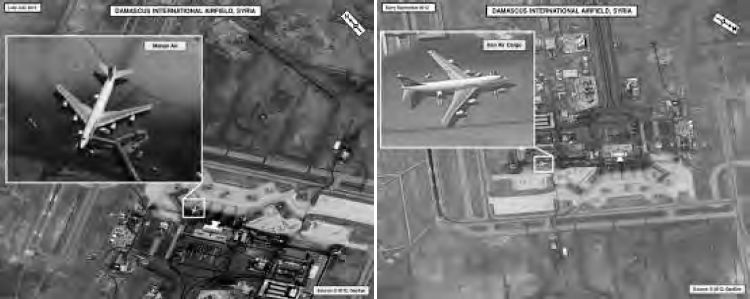
Mahan Air and Iran Air transport planes at the Damascus airport. The planes brought materiel from Iran to the Syrian regime in 2011-2012 (Photo from the American Treasury Department)
IIRG commander Mahmoud Ali Jaafari publicly admitted that Iran was supporting the Syrian regime. At a press conference in Tehran on September 16, 2012, he said that “We are proud to defend Syria, which is a cornerstone of the struggle against Israel. We are contributing advice and our experience.” He also admitted that Iran was giving Syria financial support. He denied, however, that Iran had a military presence in Syria, but threatened that Iran would change its policies if Syria were attacked (Al-Hayat, Al-Jazeera, the Free-syria.net website, September 17, 2012). In May 2012 General Ismail Qaani, deputy commander of the Qods Force, admitted that there were Iranian soldiers in Syria supporting Bashar Assad’s regime. He said their objective was to help defend the Syrian people and regime from the rebels, and that “If the Islamic Republic were not in Syria, twice as many Syrians would be slaughtered” (ISNA, Iran, May 27, 2012).
In our assessment, IIRG soldiers maintain a limited presence in Syria. So far the Iranians have not put organic military units into action against the Syrian rebels and in general they have not been involved in the fighting (although they have occasionally been killed in the crossfire).[13] On the other hand, in recent months Iranian proxy Hezbollah has increased its involvement in Syria and sent units to participate in fighting on the side of the regime (See below.).
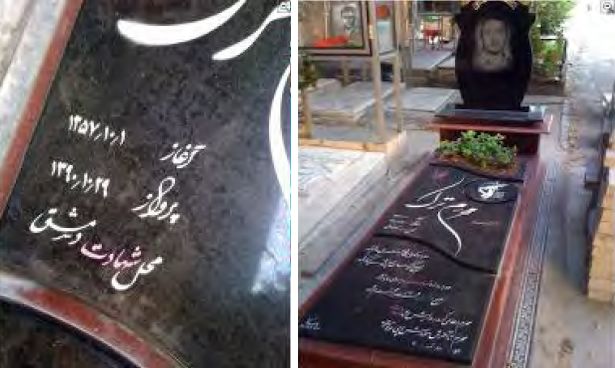
The grave of Raed Muhram Turk, an IIRG officer killed in Damascus during a firefight with the rebels. His grave, in Iran, reads “Born 1/10/1357 (year of the Hegira, i.e., March 30, 1979), died 29/10/1390 (year of the Hegira, i.e., January 19, 2012). Died in Damascus” (Al-Arabiya TV, September 19, 2012).
Iran, Hezbollah and Syria Coordinate Positions
Determining a joint strategy, and if necessary redefining it in view of military and political changes, demands frequent coordination between the Iranian leadership and Hezbollah, and between both of them and the leaders of the Syrian regime. According to the Arab and Lebanese media, they occasionally consult with one another:
- On April 19, 2013, the Kuwaiti newspaper Al-Ra’i reported that earlier that month Hassan Nasrallah had visited Tehran. While there he met with Supreme Leader Ali Khamenei, Qods Force commander Qassem Suleimani and other senior Iranian figures. The reason for his visit was Iran’s decision to put its full support behind the Syrian regime. According to the Lebanese newspaper Al-Nahar on April 21, 2013, “sources close to Hezbollah” confirmed that Nasrallah had in fact visited Iran during the first half of April 2013.
- On March 12, 2013, the Lebanese daily newspaper Al-Shira’a reported that Qods Force commander Qassem Suleimani had visited Syria at the end of February 2013. Returning to Tehran, he presented the Iranian leadership with a fairly bleak picture of the situation of the Syrian regime’s military and strategic situation. As a response to Syria’s difficulties he suggested increasing the size of the “people’s army” by sending Shi’ite volunteers to Syria to make up for the lack of Alawite fighting manpower.

Hassan Nasrallah meets with Khamenei in Tehran (Hezbollah website, April 15, 2013). The picture was published in the Kuwaiti newspaper Al-Ra’i in the article about Nasrallah’s visit; it may not have been taken during the visit.
Continue reading part two here.
![]()
Notes:
[1] Full version. This document was updated after the Hebrew Internet version had been issued.
[3] In Islamic law, takfir refers to the practice of the extreme Islamists’ declaring other Muslims as infidels and thus they may be killed.
[4] Another current example of the seeping of the Syrian crisis into Lebanon occurred on June 9, 2013, after this document had been written. In Beirut an unprecedented demonstration was held in front of the Iranian embassy against Hezbollah involvement in the Syrian civil war. During the demonstration shots were fired (from and unknown source) and a student activist who organized the demonstration was killed. Lebanese army forces imposed order and instituted a search for the assassin.
[5] The Al-Nusra Front for Support of the Residents of Greater Syria is the most prominent Al-Qaeda-affiliated Islamic organization fighting the Syrian regime. Its name is generally shortened to the Al-Nusra Front.
[6] Amos Yadlin, head of Institute for National Security Studies, (INSS) wrote an article based on foreign reports which alleged that Israel had carried out the attack. He said that “It is important to understand that this time, for the first time in a decade, Israel took action against a route used for the transfer of weapons to Hezbollah from Iran and Syria. Until 2000, Assad senior limited the arms to Hezbollah…Assad junior, on the other hand, reshuffled the cards…The weapons from Iran arrive by air at the Damascus international airport and from there are transported to Lebanon. Despite UN Security Council Resolution 1701 passed in 2006, which forbids the supply of weapons to Lebanon to any entity other than the Lebanese government, Israel did not act against the arms shipments. However, when it became obvious at the end of the last decade that all of the obstacles to the provision of weapons to Hezbollah had been overcome, Israeli designated four systems of weapons it would have to act to prevent Hezbollah from attaining, even at the risk of escalation: advanced aerial defense systems, long range surface-to-surface missiles, Yakhont antiship cruise missiles and chemical weapons” (INSS, Overview (242), May 9, 2013) (ITIC translation).
[7] The declaration was accompanied by a threat from “a senior Hezbollah figure.” According to the Hezbollah source, the significance of Syrian-Hezbollah solidarity was that a united front had been created against Israel. If Israel, according to the source, were to be foolish enough to risk entering into a war it would be blown back to the Stone Age: “Every strike on an airport will be answered with a strike on an airport and train stations [in Israel]; every strike on a power station will be answered with a strike on the [Israeli] infrastructure; every strike on a seaport will be answered in such a fashion that the new missiles will paralyze Israel’s military and commercial naval movements in the Mediterranean Sea. Thus both we and our enemy will simultaneously return to the Stone Age” (Al-Ra’i TV, Kuwait, May 24, 2013)
[8] In all the years of its existence Hezbollah has never carried out terrorist attacks through the Golan Heights, primarily because for 40 years it has been Syrian policy to preserve quiet along the border with Israel and Hezbollah’s preference for using proxies on other fronts. Nasrallah’s declaration of his willingness to participate in attacks in the Golan Heights was met with immediate criticism from the Arab and Lebanese media opposing Iran and Hezbollah. For example, the popular London-based Arab newspaper Al-Sharq Al-Awsat wrote that “Hezbollah fighters are entering a new campaign which cannot be expected to succeed, for many reasons, from the geographical nature of the terrain where they are planning to fight, to the lack of popular support in the [Golan Heights] region for the Assad regime, ending with Hezbollah’s lack of means and the expected Israeli response” (Al-Sharq Al-Awsat, May 11, 2013).
[9] For further information about the Qods Force, see the January 1, 2013 study “The Quds Force, an elite unit of the Iranian Revolutionary Guards, spearheads Iran’s global terrorist campaign.”
[10] On a number of occasions in 2012, the American media revealed that Iran was flying cargoes of weapons through Iraqi air space. On March 16, 2012, the Washington Post reported that Iranian plans had flown 30 tons of arms to Syria with manifests indicating they were “agricultural equipment.” On September 5, 2012 The New York Times reported that in July 2012 Iran had renewed it shipments of arms to Syria through Iraqi air space. According to another report, based on “Western intelligence services,” the Iranians were making daily flights to Syria through Iraqi air space on planes carrying members of the Islamic Revolutionary Guards and tens of tons of weapons and ammunition (Reuters, September 19, 2012).
[11] The Internet news site Al-Watan Al-Arabi reported that Beirut’s airport had long since become a depot for merchandise, arms and military equipment sent by Iran to Hezbollah and the Syrian regime. Iran, according to the report, used planes belonging to Iran Air and Mahan Air, flying over Iraq and Turkey (Al-Watan Al-Arabi, May 3, 2013).
[12] The governor of the Central Syrian Bank, Adib Mayala, said that Tehran had opened a line of credit of $1 billion of which Syria had already withdrawn more than half. He added that Syria expected more help from friendly countries, from Iran, Russia and possibly others (Reuters, Damascus, April 24, 2013).
[13] According to the Syrian and Arab media, several IIRG soldiers have been killed in the fighting in Syria. The rebels have also taken some prisoner. The bodies of those IIRG soldiers killed in the Damascus region were flown to Iran in an Iranian transport plane which had brought the Syrian regime weapons and ammunition (Al-Mukhtasar, Arabic news website, October 1, 2012).



 RSS
RSS

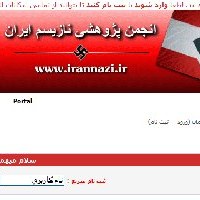

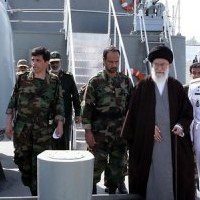

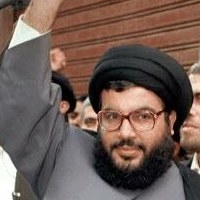




[…] Center. This is the updated English version and will be published in three parts. You can read part 1 here and part three […]
[…] Center. This is the updated English version and will be published in three parts. You can read part one here and part two […]
[…] and Terrorism Information Center. The updated English version was published in three parts here: part 1, part 2 and part […]
[…] For more information on Hezbollah’s growing involvement in the Syrian civil war, see the June 17, 2013 study: “Hezbollah Involvement in the Syrian Civil […]